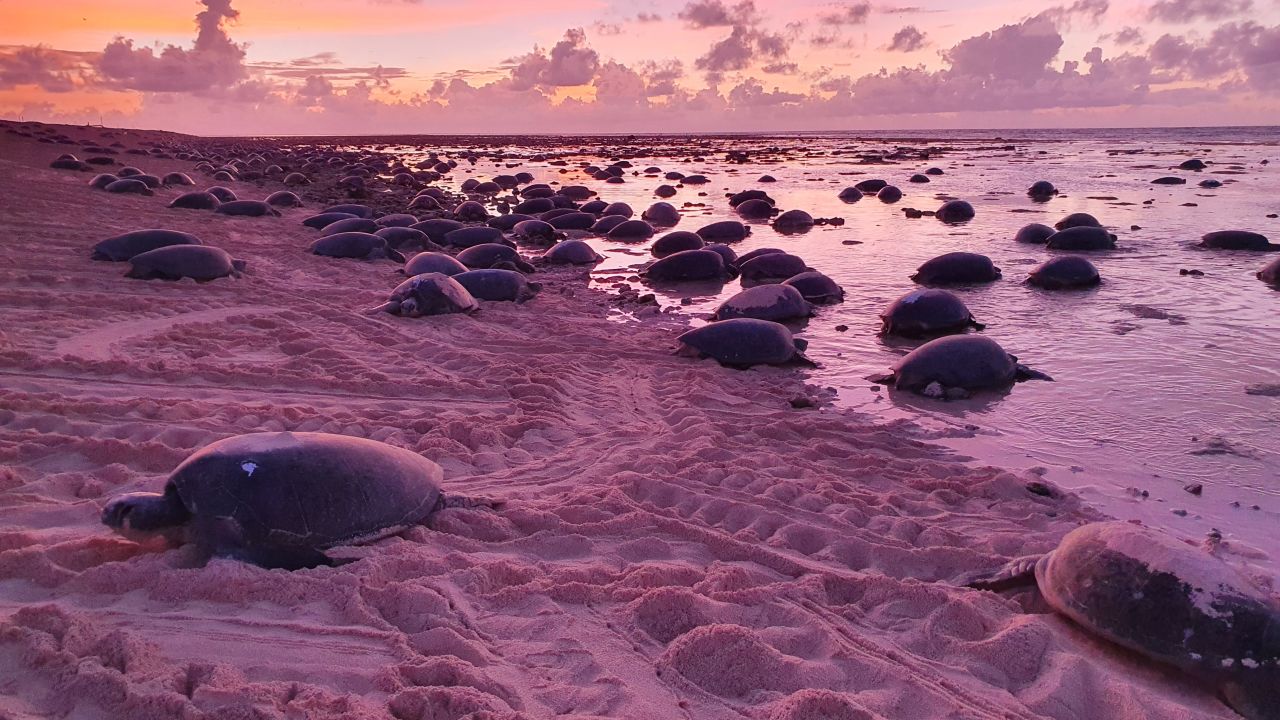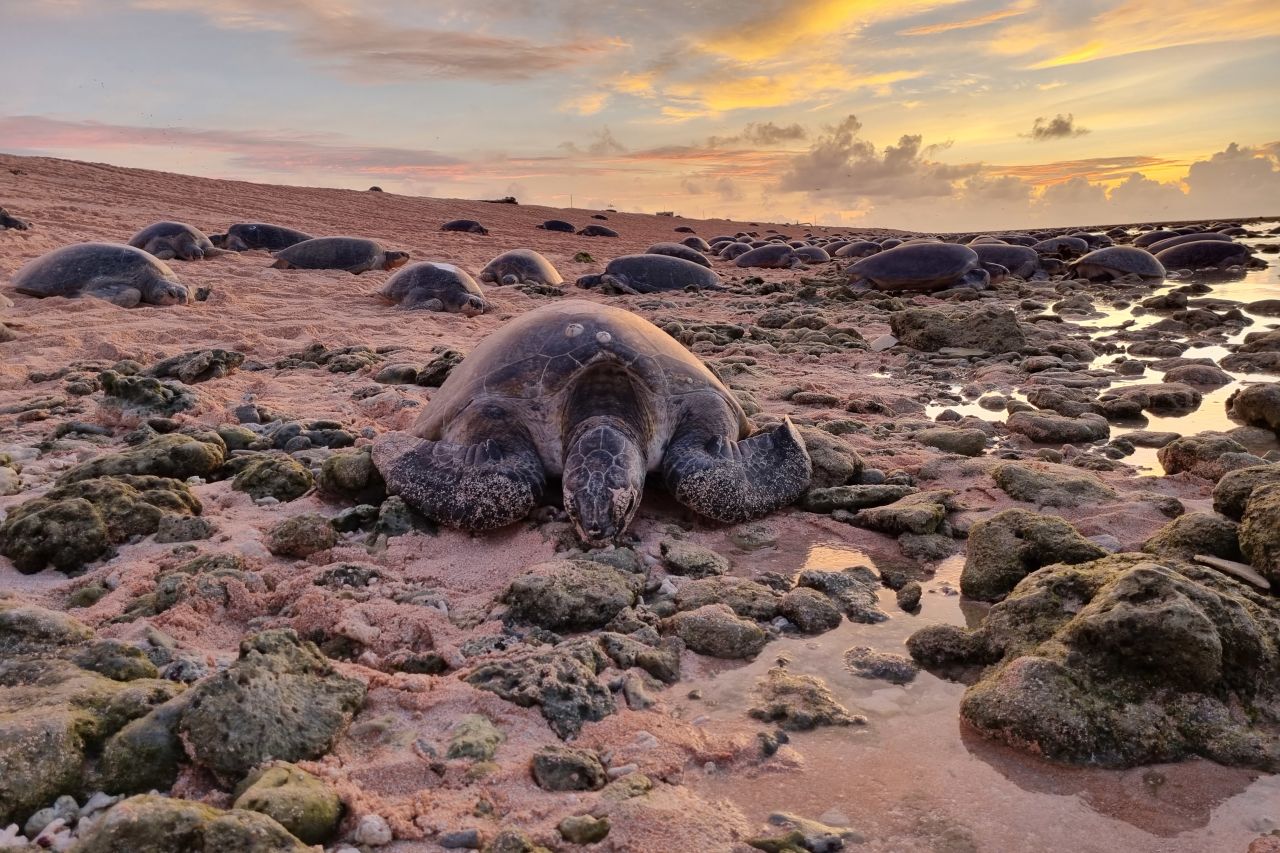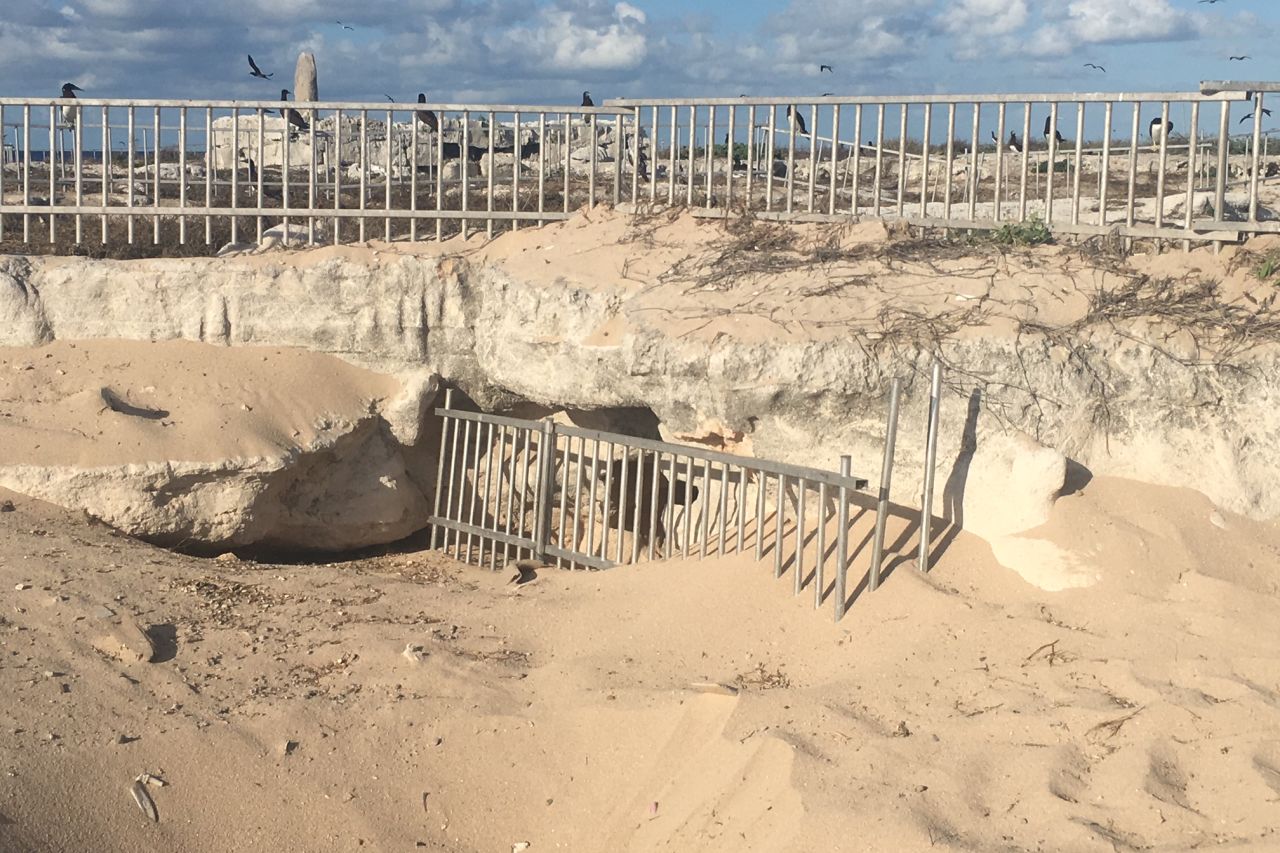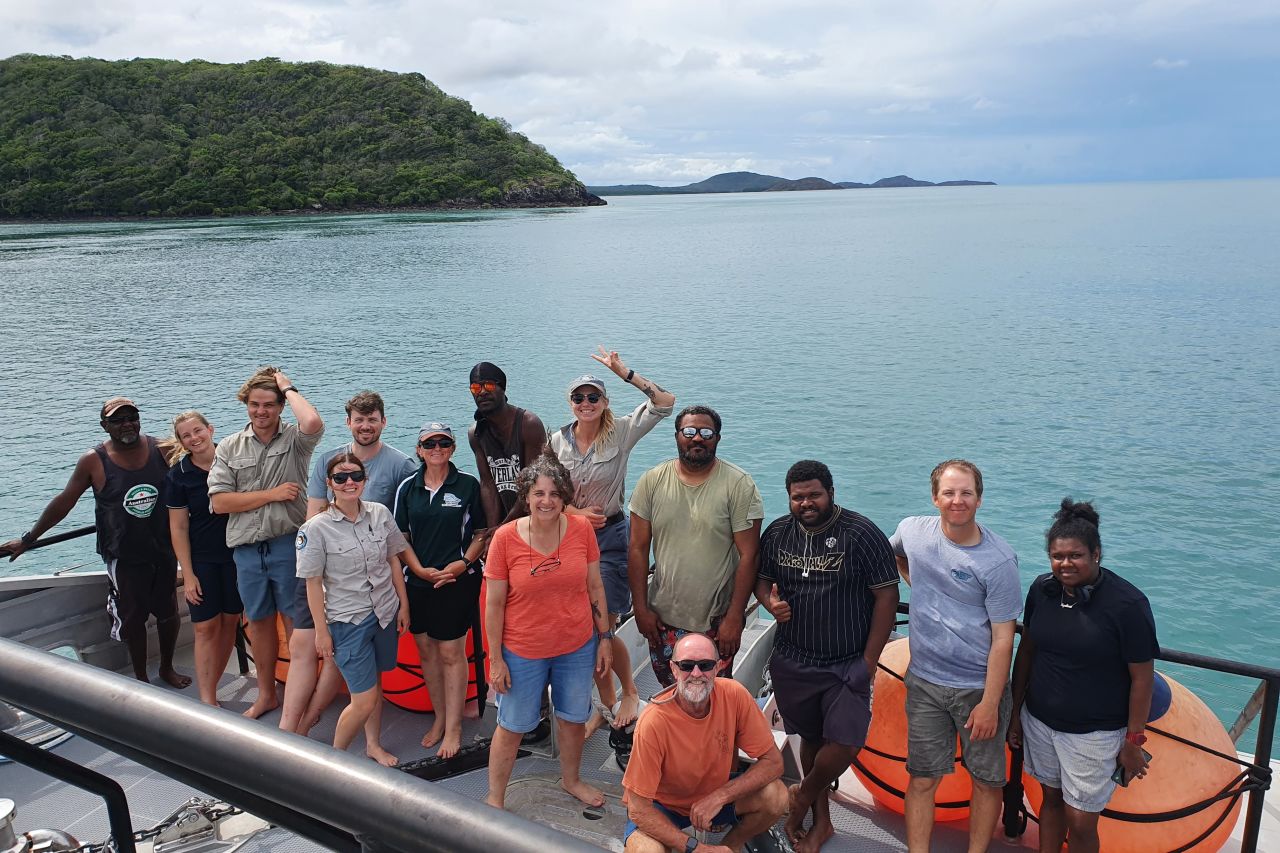News ·
Endangered green turtles nesting in their thousands on Raine Island

Thousands of endangered green turtles have arrived on the Great Barrier Reef’s Raine Island to nest this season.
Researchers and Traditional Owner rangers visited Raine last month and recorded 12,500 turtles in the water around this tiny, remote island on the northern edge of the Reef.
During their 10-day trip, an average 5,734 turtles inched their way up onto the beach each night to lay their eggs.
Raine Island is the planet’s largest remaining nesting site for endangered green turtles. As part of our world-leading conservation program on the island, the Raine Island Recovery Project has doubled the available nesting area for green turtles, enabling more females to nest successfully.
With our project partners, we’ve moved 40,000m3 of sand – enough to fill 16 Olympic-sized swimming pools – raising the height of the nesting beaches to prevent nests from flooding.
We also installed turtle-proof fencing to protect nesting females from fatal cliff falls.

Female green turtles travel thousands of kilometres to nest at Raine Island. Credit: QPWS
During this season’s visit, researchers confirmed the reprofiled areas have remained stable and more females are successfully nesting in those areas than on other parts of the island. The fencing is also proving highly effective at preventing falls.
In an exciting discovery, researchers also observed 143 green turtles that had previously been tagged in the area, including one turtle that was tagged 30 years ago in its feeding ground at nearby Clack Reef and hadn’t been seen since.
They tagged an additional 1,335 turtles with titanium flipper tags, which provide long-term data about their migratory and breeding habits.
The researchers will return to the island during hatchling season in February, to check the nests and count turtle hatchlings.
Already, 640,000 more turtle hatchlings have begun life on the Reef because of our conservation program.
Raine Island Recovery Project
Raine Island is on the northern edge of the Great Barrier Reef, 620km north-west of Cairns, in Wuthathi Sea Country.
Around 90% of the Great Barrier Reef’s entire northern green turtle population originates from the Raine Island National Park.
They are part of one of the most spectacular ocean migrations on the planet, travelling thousands of kilometres to return to the area where they hatched decades earlier to lay their eggs.
Over 30 years ago, scientists began witnessing an alarming new phenomenon – salt water was flooding the beach at high tide, drowning eggs and reducing the number of hatchlings emerging from nests.
Adult female turtles returned to the sea exhausted, unable to find a safe nesting place, and thousands perished – falling victim to treacherous cliff falls, getting trapped in rocks or dying from heat exhaustion on the sand.
With many other Reef animals relying on this remote island, the disturbing decline of the endangered green turtle population also posed a devastating impact on this delicate ecosystem.

With our partners, we installed fencing to prevent fatal cliff falls, which were common before our project began. Credit: QPWS
In 2015, the Great Barrier Reef Foundation, with the Wuthathi and Meriam Nation (Ugar, Mer, Erub) Traditional Owners, Queensland Government, Great Barrier Reef Marine Park Authority (GBRMPA) and BHP, formed an innovative partnership to implement practical solutions at Raine Island.
Together the group pioneered the Raine Island Recovery Project, an ambitious, world-first conservation program to protect and restore the island’s critical habitat to ensure the future of key marine species, including green turtles and seabirds.
Key interventions and activities have included:
- Installing 1,750m of protective turtle-proof fencing, preventing fatal cliff falls
- Moving 40,000m3 of sand by earth-moving machinery to raise the height of the nesting beaches above tidal inundation
- Rescuing fallen and trapped turtles, preventing deaths from heat exhaustion
- Monitoring and tracking key island species – including turtles and seabirds – via satellite tagging, drones, survey methods and a remote island network to understand nesting and foraging behaviours
Throughout the project, First Nations People have shared Traditional knowledge and made decisions on the management of the island.
Wuthathi and Meriam Nation (Ugar, Mer, Erub) Peoples have been involved in every project trip to Raine Island. Cultural Heritage Advisors supervised large-scale sand reprofiling works and rangers contributed to all on-ground activities, caring for animals and helping restore and protect the island.





